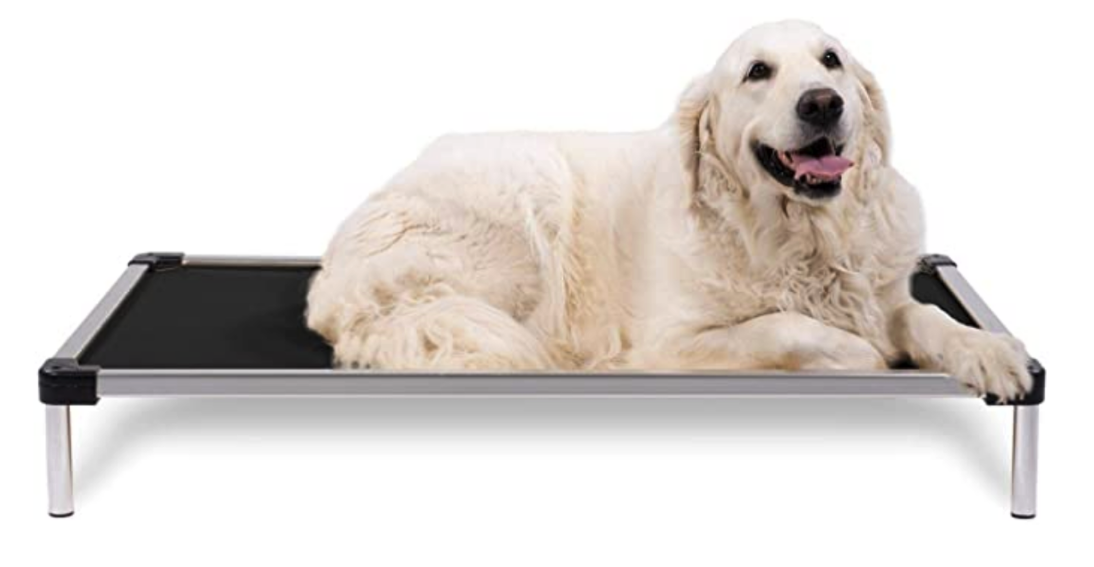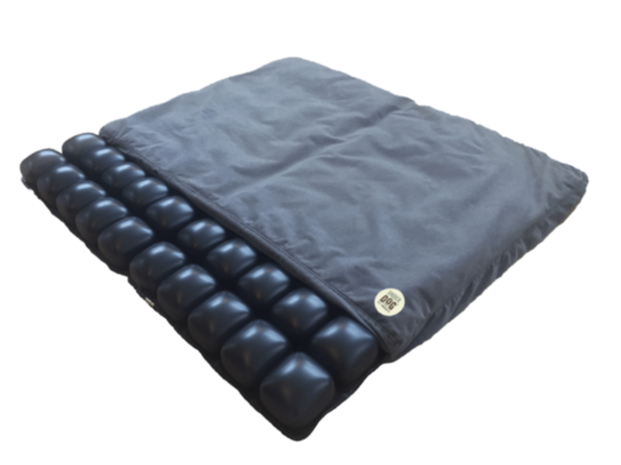How to Pick Out Large Dog Beds for Large Breed Dogs
Oct 08, 2021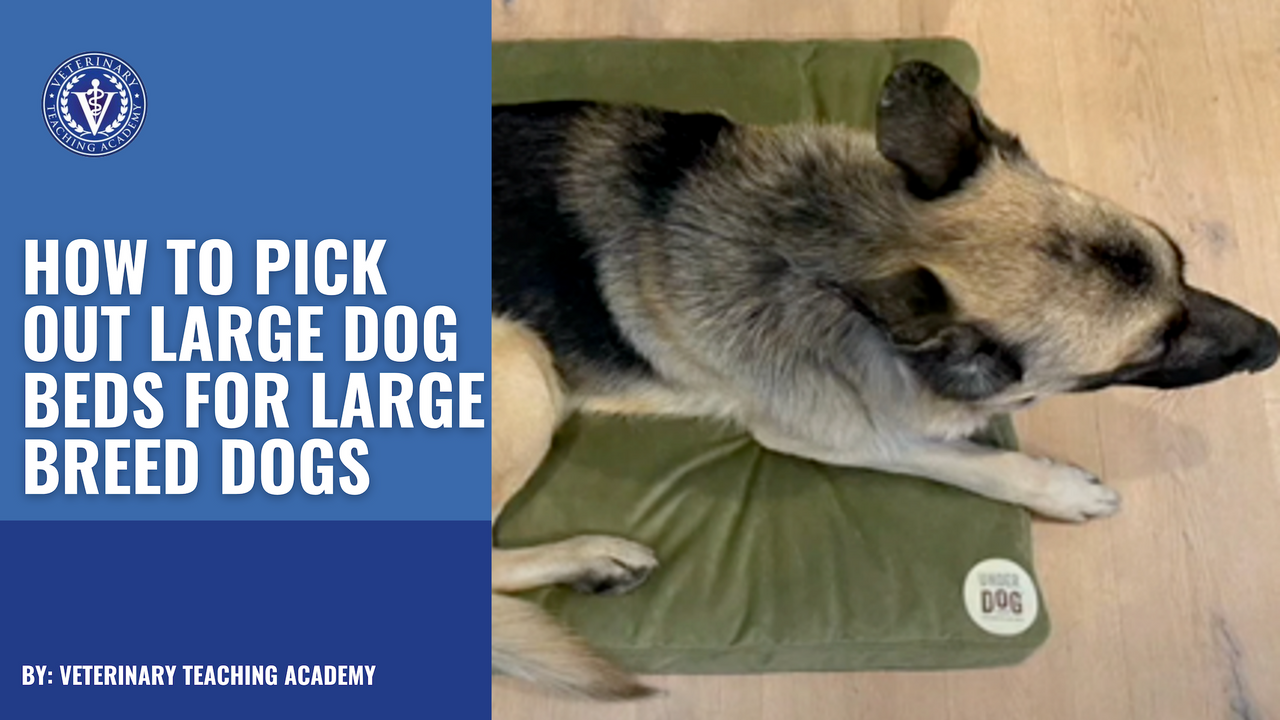
We typically only think about bedding systems when our pet is getting older and we want to make them more comfortable in their old age. We need to be thinking about a comfortable, supportive bed when our pet is young and continue to do so all through its life.
A dog has a special relationship with its bed, and it often spends much of its day as well as all of its night in its personal sleeping area. For this reason, it’s important to have a bed that not only the dog loves but that enhances its health and longevity.
If you live with a large-breed dog, you may struggle to find a suitable dog bed. Large-breed dogs need beds that are supportive, comfortable, and easy to get in and out of.
There are numerous options for dog beds out there to choose from, including foam, synthetic cushion, memory foam, air beds, orthopedic foam, hammock style, and many more. But how do you know which of these is right for your large-breed dog?
Support is the Number-one Consideration in a Large-breed Dog Bed
Although dogs may like soft beds, they need to rest on a firm surface—not the floor, because that’s too hard, but a bed made of memory foam or other type of cushioned but supportive sleep surface. These orthopedic beds relieve pressure, distribute the dog’s weight evenly, and are just plain comfortable. These beds aren’t just for older dogs but are ideal for younger, growing dogs, too.
Regardless of which type of dog bed you choose, it’s essential to protect your pet’s joints from contact with the hard surface of the floor. This is especially important for large-breed dogs. The right bed can help alleviate joint pain, prevent skin problems, and provide them with a comfy place to lie down or snooze.

Let’s talk about some of the most common types of dog beds.
Memory Foam
Memory foam is a popular choice in a dog bed, but be advised—not all memory foam is created equal. Some memory foam flattens with time, so I suggest that if you’re considering a memory-foam option, find a bed that has a minimum of two inches of memory foam. Most orthopedic memory-foam beds have at least four inches of memory foam; some even have seven. Also, make sure the bed comprises one piece or multiple layers of memory foam rather than shredded foam pieces.
The Big Barker Dog Bed™ is a foam-based dog bed that changed my fundamental thinking about what bedding for our large-breed pets should and can be. It’s now one of my go-to bedding systems that I recommend to my clients for all their pet’s life stages.

The inventor of this dog bed got frustrated with buying dog beds from big-box stores in which, after six weeks or six months, the foam in the cheap dog bed became completely compressed and left the dog pretty much sleeping on the hard floor.
With this in mind, the developer of the Big Barker Dog Bed spent a year developing a bedding system comprising multilevel layers of different types of foam to provide total and long-lasting support for the dog.
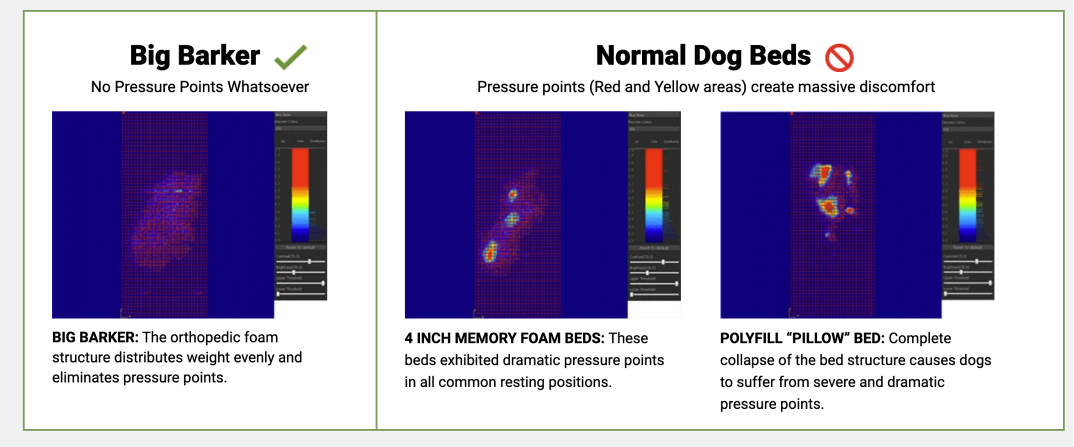
The images above of force-plate studies show how the loading-force weight—the weight of the dog, which is especially a consideration in a large-breed dog—is distributed in three different types of bedding systems. You can see that with the Big Barker Dog Bed, there are no contact points between any part of the dog’s body and the floor. The bed supports the dog and does the job it’s supposed to.
Shredded Foam
This is my least favorite bedding option for large-breed dogs because the support diminishes over time as the pieces of shredded foam move apart. This shifting of the foam pieces causes thin spots in the bed that don’t support the pets’ joints.
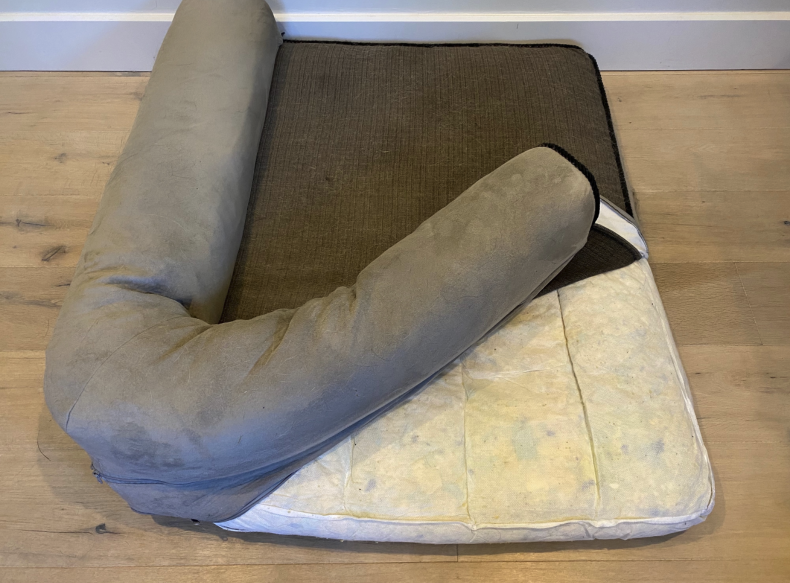
These shredded foam beds are the most common dog bed sold on the market, but because the shredded foam separates and compresses, this is particular a problem for large-breed dogs.

If you’re looking at a shredded-foam bed for your pet, opt for an overstuffed model to start with, because this will take longer to flatten over time.
Hammock or Suspended Bed
A slightly elevated, hammock-style bed (about one to two feet above the ground) usually fits a large-breed dog’s body better than a dog bed on the floor. This is because it’s usually easier for a large dog to get up into and lie down on this type of bed. This is especially true if the dog is suffering from any type of degenerative joint disease. If the bed is the proper height, climbing into and out of this type of bed is easier—especially for an older dog—than getting up and down from a bed on the floor.
However, there can be problems if this type of bed is too high off the ground and requires the dog to jump down or climb up onto the elevated bed. This can result in injury and other issues.
The principle behind elevated dog beds is that they allow air to flow under the bed so the large-breed dog is cooler in summer while keeping it off the cold, hard floor in summer.
Air Foam
Another bedding system that I recommend is the UnderDog Orthopedic Pet Bed™. This is a therapeutic bedding system based on a technology using air cells that mimic the buoyant properties of water.
This bedding is essentially an air mattress with multiple, fingerlike air cells that distribute the pet’s body weight by bending in various directions, as shown in the image below. Evenly distributing the pet’s weight supports it in a way that increases blood flow and helps prevent the stress and pressure that can result when bedding doesn’t support the dog’s joints—which is often the case with traditional, cheap dog beds.
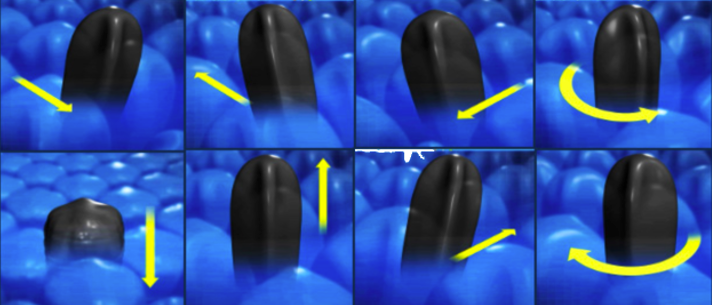
The UnderDog Orthopedic Dog Bed has been shown to help relieve pain and prevent stiffness and soreness in pressure points that can occur if the pet has been lying in the bed for a long time, as shown in the images below. These images show the amount of pressure on various areas of the dog’s body when it lies on different types of bedding.
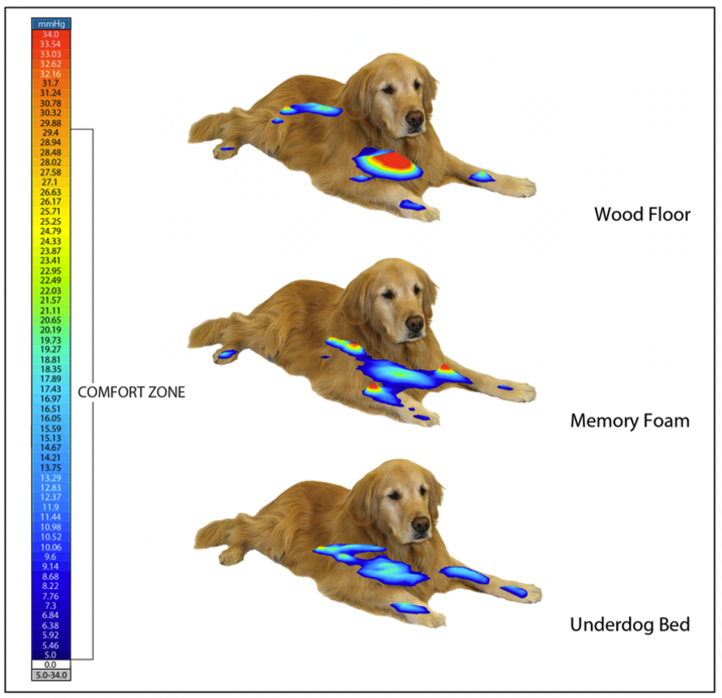
This Underdog Orthopedic Dog Bed is especially good for postsurgical patients and pets that have developed incontinence (fecal or urinary), because the covers are washable. This bedding system is also great if your pet has advanced osteoarthritis and needs an enhanced level of support.
Choosing the Correct Bed Size
For larger-breed dogs, the bed should be about one-fourth longer than the dog when it lies down and be the same width as the dog is tall. A bed with these dimensions allows the dog to stretch out and be supported.
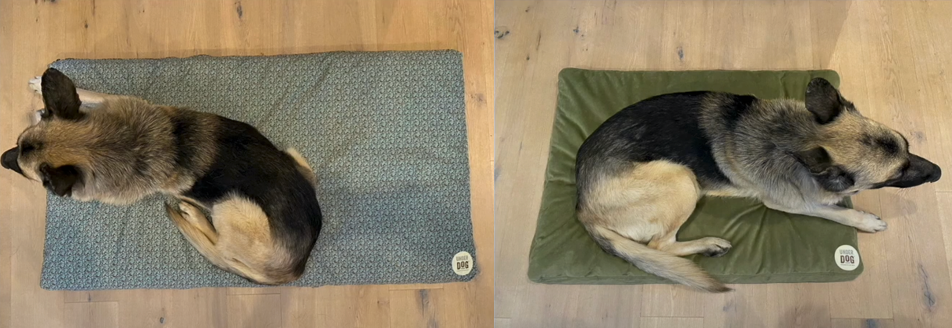
A too-small bed or a bed that just fits its size doesn’t allow the dog to move around and be comfortable. If the bed is too small, the dog is more likely not to use it. Below is a helpful sizing guide that Big Barker makes available to determine which size bed is best for what size dog.
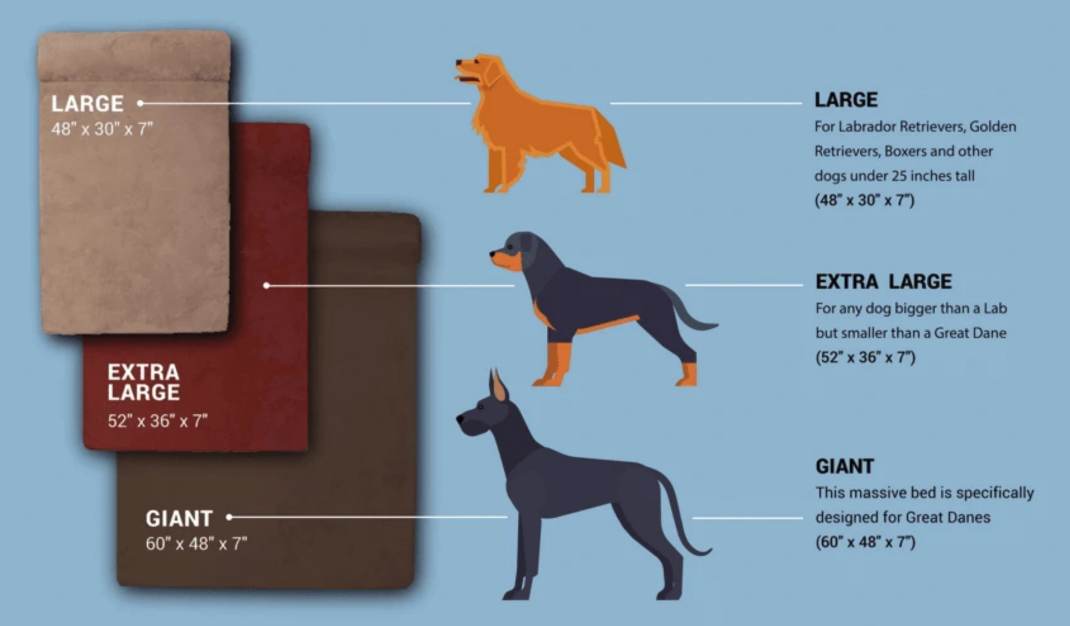
Other Things to Consider
Especially during warmer months, many larger-breed dogs love to find cool places to lie down—hardwood floors, tile, and concrete floors, to name a few. In older large- or giant-breed dogs, these surfaces can be hard on their skin, joints, and muscles and exacerbate degenerative joint conditions.
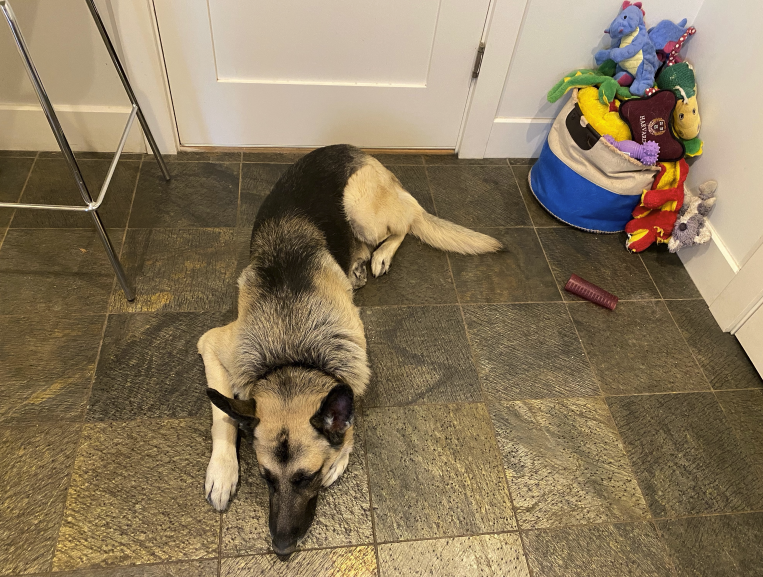
It’s common for dogs that sleep on hard surfaces to develop joint pain and callus formation on their “elbows.” Sometimes, a hygroma (a fluid-filled pocket) forms around the elbow joint to help protect it from repeated trauma associated with lying on hard surfaces.
It’s often a good idea to have several, good-quality, supportive beds around the house that are located where the dog likes to lie down. You may have the best dog bed in the world, but if it’s in an area of the house that your pet doesn’t like to be, the dog probably won’t use it. In warmer months, place the bed in a cool place in the house so it won’t be as tempted to lie on cool, hard surfaces.
Cooling devices can help your pet opt to use the bedding systems that you choose during the warm months. An example of this is the The Green Pet Shop Cool Pet Pad™, but there are other cooling systems out there that are designed to make your large-breed dog more comfortable.
My Bedding Choice for Large-breed Dogs
Both the Big Barker and UnderDog beds are excellent. Each succeeds in providing comfortable, supportive bedding using its own unique design. In light of the new, multimodal thinking about preventing degenerative joint disease, these beds are my new gold standard in what canine bedding should be.
© Author: Dr. John | Veterinary Teaching Academy

